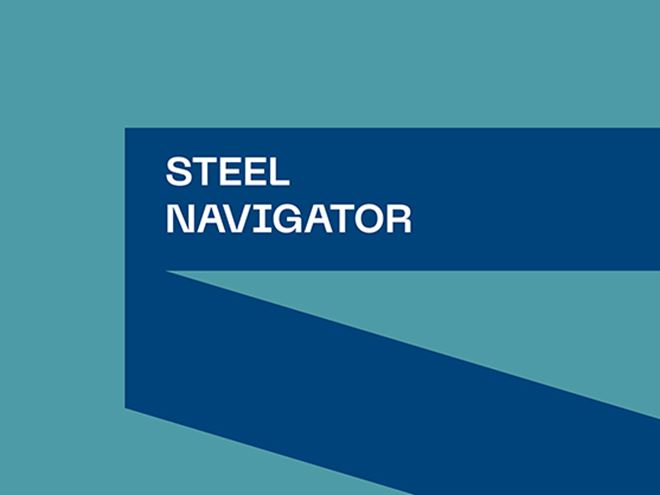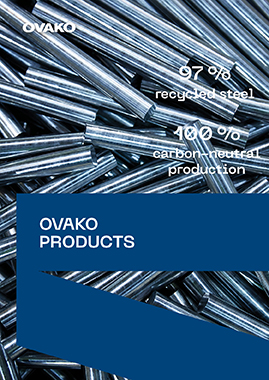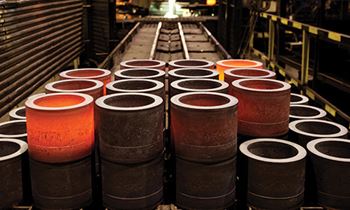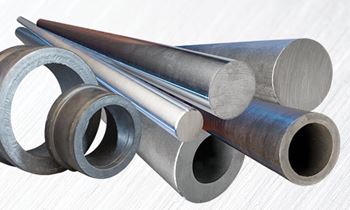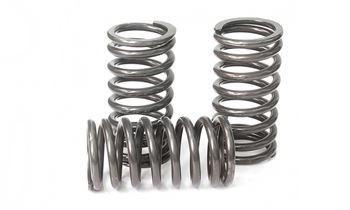Case hardening entails the treatment of a finished component in a carburizing atmosphere at a high temperature, typically 850–950°C, which increases the carbon content at the surface of the component. The carburized layer is typically 0,5–1,0 mm deep but can be deeper. Following carburization, the part is quenched and thereby hardened. During quenching the carburized layer is transformed to martensite with hardness determined by the carbon content. The result is thus a component with a hard surface and a comparably soft core. Typical components made out of carburizing steel, are gears in transmissions.
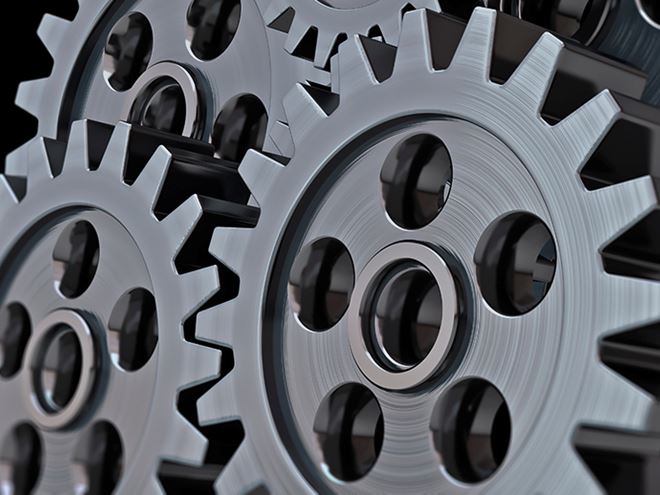
|
EN-standard |
Ovako |
Typical analysis |
||||||
|
C |
Si |
Mn |
Cr |
Mo |
Ni |
Other |
||
|
16MnCr5 |
0.16 |
0.2 |
1.2 |
1.0 |
|
|
|
|
|
20MnCr5 |
0.20 |
0.2 |
1.3 |
1.2 |
|
|
|
|
| 18CrMo8-5* |
0.18 |
0.3 |
0.8 |
1.8 |
0.5 |
|
|
|
|
20MoCr4 |
0.20 |
0.2 |
0.8 |
0.5 |
0.4 |
|
|
|
| 20NiCrMo2-2 |
0.20 |
0.3 |
0.9 |
0.6 |
0.2 |
0.5 |
|
|
| 16NiCrS4 |
0.16 |
0.1 |
1.0 |
1.1 |
|
0.8 |
|
|
|
20NiCrMo7 |
0.20 |
0.2 |
0.6 |
0.5 |
0.2 |
1.7 |
|
|
| 18CrNiMo7-6 |
0.18 |
0.2 |
0.7 |
1.7 |
0.3 |
1.6 |
|
|
| 12NiCr14-6* |
0.13 |
0.3 |
0.5 |
1.5 |
0.1 |
3.3 |
|
|
|
18NiCrMo14-6 |
0.18 |
0.3 |
0.5 |
1.4 |
0.2 |
3.3 |
|
|
|
22NiCrMo12-5* |
0.14 |
0.2 |
0.6 |
1.2 |
0.2 |
2.9 |
|
|
|
24NiCrMo15-5* |
0.24 |
0.3 |
0.7 |
1.2 |
0.3 |
3.6 |
|
|
|
20NiMo9-7* |
0.20 |
0.1 |
0.3 |
0.4 |
0.7 |
2.3 |
|
|
|
30MoCrV20-7* |
0.30 |
0.2 |
0.3 |
1.7 |
1.8 |
|
V |
|
|
16CrMnNiMo9-5-2* |
0.16 |
0.2 |
1.3 |
2.1 |
0.5 |
0.5 |
V |
|
EN-standard designation followed by “*” is not an official EN standard grade but named according to the rules in EN 10027.
Steel Navigator - Find the right steel for your application
Steel Navigator contains a selection of useful tools such as Material Data Sheets, Machining Calculator, Heat Treatment Guide, Piston Rod Predictor and more.
